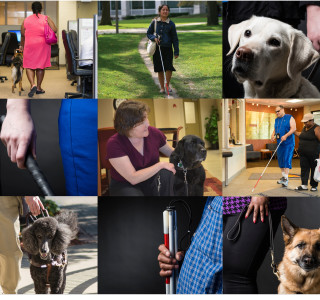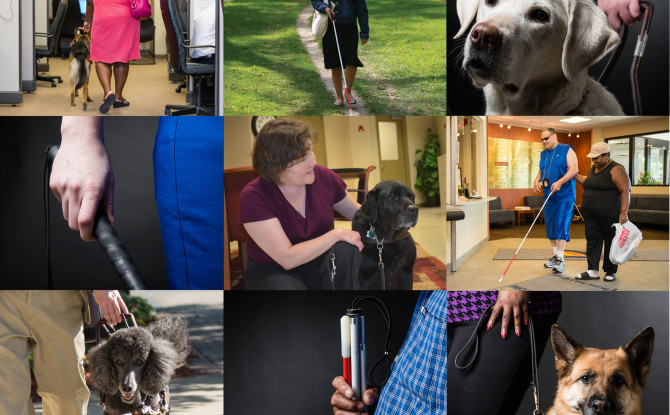
Cane vs. Dog: Which Is Better for the Blind?
April 21, 2016
“Why don’t you have a dog”? This is one of the questions I get the most from acquaintances and strangers alike. Truth is that although dogs appeal more to the general public than white canes, not everyone — myself included — has the time or even feels the need to get a dog. Many people have the misconception that most blind people use a dog to get around. According to The National Federation of the Blind, only about 5 percent of people who are blind or visually impaired use dog guides. I spoke to several friends and colleagues to get their views, and each answer was as different as their lifestyles.
Dog guides aren’t mobility devices people can simply put away at the end of the day. They require a lot of love and care, just like any other animal. Carol Anderson is an attorney at The Chicago Lighthouse’s Kane Legal Clinic. She is totally blind, and has never once considered using a dog. Given her lifestyle, she feels that a dog would be an enormous undertaking, and is not sure she could handle the responsibility.
Sammi Grant works as a dialect coach and is also blind. She has become very comfortable and confident using a cane, and often travels to different places independently. Although she knows a dog could protect her from dangers like oncoming cars, her lifestyle is not conducive for a dog guide. With an often unpredictable work schedule and numerous engagements, she is not sure she could set a routine to care for it. Still, she is willing to consider getting one in the future.
Like Sammi, Alicia Krage is a confident cane traveler. In her case, getting a dog would only add more work to her already hectic college schedule. She knows a dog guide is an excellent mobility tool, but at the same time having to care for it would take away some of her freedom. Her answer is simple and straight forward: “I prefer a cane”!
Beth Finke, Maureen Reid and Bill Jurek are all long time dog guide users. Their desire to have more freedom and feel safe were deciding factors in their choice to get dogs. Bill and Beth tell me that with a cane, they would veer constantly when walking outside. This made even the shortest of walks very stressful and even impossible. One of the things Maureen hated about using a cane was constantly bumping into people and things. Her extraverted nature and love for dogs also helped her realize that a dog was the right choice. All three agree that traveling with dog guides has made their life easier, and they have regained their independence.
Greg Polman is the Senior Vice President of Public Policy at The Chicago Lighthouse, and he decided to get a dog guide because of constant changes in the environment. Quiet cars, construction sites, and the need to travel throughout Chicago and other cities are some of his reasons for using a dog. He emphasizes that good orientation and mobility skills are important for anyone considering a dog guide. People should also keep in mind that knowing how to use a cane will still come in handy even after having the dog – there is always a chance that the dog will become ill, or that its handler will have to go somewhere without it.
Asking someone who is blind why he or she doesn’t have a dog guide is like asking a sighted person why they use public transportation or drive a certain brand of vehicle. Like anyone else, people who are blind or visually impaired have different lifestyles and preferences, and neither a dog nor a cane are one size fits all tools. Choosing between the two is a very personal choice, and should be taken seriously. Both a cane and a dog guide are great mobility tools, and can provide freedom and independence. Like with anything, there are pros and cons to both, and it is up to each person to carefully consider them before making a choice.






